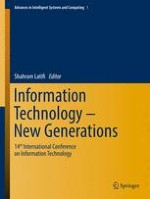2018 | OriginalPaper | Buchkapitel
60. An Optimized Data Mining Method to Support Solar Flare Forecast
verfasst von : Sérgio Luisir Díscola Junior, José Roberto Cecatto, Márcio Merino Fernandes, Marcela Xavier Ribeiro
Erschienen in: Information Technology - New Generations
Aktivieren Sie unsere intelligente Suche, um passende Fachinhalte oder Patente zu finden.
Wählen Sie Textabschnitte aus um mit Künstlicher Intelligenz passenden Patente zu finden. powered by
Markieren Sie Textabschnitte, um KI-gestützt weitere passende Inhalte zu finden. powered by
